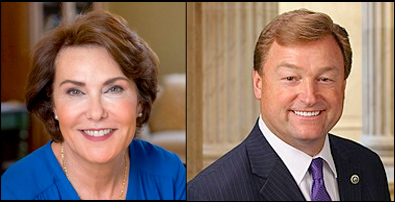By Jim Ellis
Sept. 19, 2018 — A new survey was just released covering the two Nevada statewide campaigns, and the results are curious.
Gravis Marketing tested the Silver State electorate (Sept. 11-12; 700 likely Nevada voters) and finds consistency with other polling in one race but projects a major change in the other.
According to Gravis, Rep. Jacky Rosen (D-Henderson) holds a 47-45 percent lead over Sen. Dean Heller (R) in the US Senate campaign. Such a conclusion is well within the range of other published data.Just as Gravis was beginning their survey process, Suffolk University was ending theirs (Sept. 5-10; 500 likely Nevada voters), and they saw Rep. Rosen holding a similarly close 42-41 percent edge. Suffolk also surveyed in late July (July 24-29; 500 likely Nevada voters) and found Sen. Heller clinging to a one-point 41-40 percent lead. All of these consistent findings suggest the Senate race has been, and continues to be, a pure toss-up.
But the same Gravis polling sample produced a radically different conclusion for the open governor’s race. All other previous data found Clark County Commissioner Steve Sisolak (D) and Attorney General Adam Laxalt (R) locked in a close battle. The same two previous polls cited above for the Senate race, Suffolk University’s Sept. 5-10 survey and their July 24-29 study, actually found Sisolak ahead only 37-35 percent in the former, while Laxalt actually led 42-41 percent in the earlier poll.


